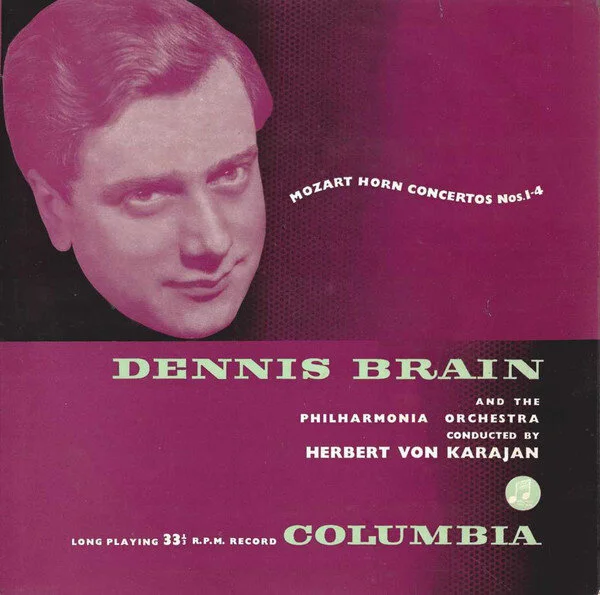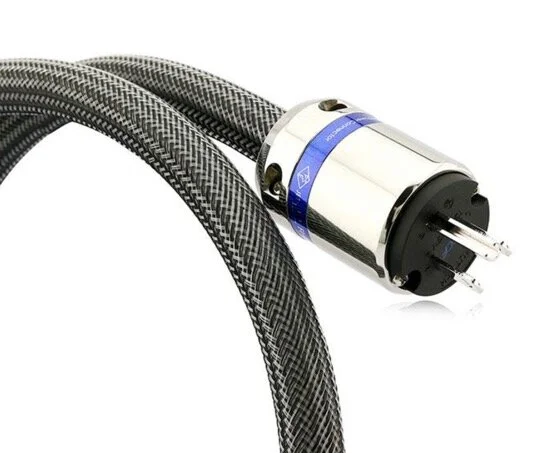PS Audio DirectStream Power Plant 12
The failure of my reference power conditioner had me reaching out for a replacement to manufacturers I deemed outstanding in legacy builds. I had extensive experience with a few at one time or another and thought I’d give conditioners from two highly regarded companies a whirl and report my findings to you.
AudioQuest sent me their entry level $995 Niagara 1200 Low-Z Power | Noise-Dissipation System for review. It had far from entry level performance, enjoying lots of trickle down technology from its more expensive siblings, the Niagara 3000 ($2995), Niagara 5000 ($4995) and Niagara 7000 ($9499).
PS Audio sent me their $4999 DirectStream Power Plant 12, the conditioner (regenerator) of choice for two Audiophilia colleagues. The Power Plant 12 is a full $4000 on top of the recently reviewed AQ Niagara 1200.
The two products that came in for review, however, are completely different animals.
Rather than passive conditioning like the AudioQuests, the PS Audio Power Plant 12 features an ultra-low impedance analog power amplifier and a DSD FPGA based sine wave generator (taken from the PS Audio DirectStream (DS) DAC). In comparison, very much active ‘conditioning’.
To be clear, PS Audio’s unique topology takes…
…your incoming AC power and converts it to DC, similar to what comes out of a battery, and then with patented PS Audio technology regenerates and produces new sine-wave-perfect, regulated high current AC power. In the process of regeneration, any problems on your power line such as low voltage, distorted waveforms, sagging power, and noise are eliminated.
My Use
My thanks to Frank Doris of PS Audio for shipping the Power Plant 12 to the island.
The unit arrived in perfect condition, boxed professionally and replete with manual. It’s quite heavy at 16.7kg. The rear has outlets organized in ‘Zones’: 2 source outlets each in Zones A, B and C, with 2 high current outlets in Zone D. Each zone can be named and/or defeated from the front screen. Plugging in my source components (in A, B and C) and the MBL N51 Integrated Amplifier or Allnic Audio M-2500 Monoblock Amplifiers (in D) took but a moment. The power cord was a different matter.
I forgot the tale told to me by Audiophilia’s Karl Sigman about his Power Plant 12 and the unit’s IEC outlet close position to one of the high current outlets (see below). So close, in fact, that anything other than a standard power cord will not fit if using a specialist (large) power cable for your amplifier. I opted to power the unit with the supplied IEC cable (a suggestion made by the manufacturer in the manual) and filled the high current outlets and source outlets with beefy, superb power cables from Allnic Audio, AudioQuest and AntiCables.
The front includes a large touch display where you can access the regenerator’s features including measurements for distortion, improvement levels and power usage. You may also adjust on/off settings (there is soft start circuitry) and measure the power quality with the 12’s built in (colour) oscilloscope or its THD analyzer. A remote control is supplied. My screen was set to off for most of the time.
The following two terms are not trademarked, but coined, I assume, by PS Audio to describe two added functions: ‘MultiWave’ and ‘CleanWave’.
According to PS Audio:
MultiWave extends the peak charging time of the sine wave so connected equipment has more energy storage and less power supply ripple. Turning MultiWave on is like adding a larger capacitor bank to your connected equipment’s power supply. The audible results are dramatic and produce a bigger soundstage that sounds far more natural than with a simple sine wave.
And CleanWave helps connected equipment demagnetize their transformers.
Activating CleanWave from either the Power Plant remote control or front panel touch screen can remove this problem from connected transformers resulting in far cleaner audio.
I tried both and neither was deleterious to my musical picture. MultiWave did alter the sound, but no better or worse than without, just a different perspective. I discovered that my system did not require any of the 12’s considerable bag-o-tricks, simply, its amazing base technology. YMMV. Mileage is different for Audiophilia’s Karl Sigman, where MultiWave on setting 3 rocks his Manhattan world. He gives CleanWave a run every once in a while, too, with positive effect. I’ll give CleanWave another run when I’ve had the 12 in my system for longer. I’ll report the effect in Comments below.
Thus, with the screen and blue LED power indicator light dimmed, I forgot about the 12 and the considerable job it was doing with its basic functions.
Like every PS Audio product, the 12 is built to a high spec. Please read the Power Plant 12 specific page at the PS Audio site for a deep dive into its wizardry.
Just as gorgeous in black (the colour of the review unit).
PS Audio suggests that ‘Power Plants have such low output impedance that even the hungriest of amplifiers won’t be starved for clean AC power.’ This was spot on with both my Class D MBL and Pentode KT150 Allnic Audio amplifiers. Additionally, the unit’s onboard tech gave me great confidence that my precious equipment was protected from voltage irregularities, spikes, etc.
The power on the island is remarkably stable. Even so, every conditioner I’ve used in my time here has improved the sound to some degree. Yet, the power’s stability was measured on the front panel analysis as similar every time I lit up the screen to test functionality. Again, city/rural dependent, YMMV. The 12 has you covered wherever you live on the grid.
One of my favourite features was input naming. Explained by PS Audio as:
With 4 zones available on the P12 it is important to know which piece of equipment is being powered by which zone so you can access it from either the front panel or the web interface. On a P12 it’s easy. You can name each zone anything you wish via the P12’s easy to use graphical interface available through the front panel touch screen.
Once the outlets are named then it’s quite easy to schedule when they turn on/off or the sequence that they are powered on. For example, you may wish for all your sources to turn on first, warm up and then when you decide it’s long enough, your power amps will turn on.
What an ingenious and useful feature.
Extreme thermal conditions are handled by heat sinks and two whisper quiet fans. The fans can’t be heard even when cooling demands are placed upon them.
Specifications
1200 VA output
8 outlets
15 amp AC input
120 volt regulated
Range 95 – 145 VAC
100% regenerated AC
Improvement meter
Power meter
Control over the web
Adjustable output voltage
Field upgradable
Unit Dimensions: 43cm W x 36cm D x 10.16cm H
Effect on sound
Active regeneration certainly has its detractors, usually from those competing with PS Audio. As a reviewer, I report as I find. The detractors told me they prefer a passive path to conditioning. I’ve certainly had success with passive examples in my systems over the years (and a few duds in the early ‘90s).
I’ve heard the Power Plant 12 and its big brothers, the 15 and 20, in many superb sounding scenarios. Recently, PS Audio has introduced a relatively inexpensive regenerator in its popular Stellar Line, the Power Plant 3 ($1599), which I have not heard (we are in the process of reviewing the Stellar Phono Preamplifier—$2499).
Show conditions can make it difficult to asses sound unless hearing a dedicated demo in a good a environment (I’ve been very impressed by Nordost and AudioQuest cable/conditioner show demos). But, it was instructive that several friends use Power Plants in addition to my Audiophilia colleagues. In fact, they all swear by the technology.
Break in? As the 12 has two component parts not associated with standard conditioners, I thought a break in period was warranted. I gave it a few days of door closed/CD repeat use. What I discovered after a few days was different than I had expected. My main takeaway from the AudioQuest Niagara 1200 was the beautiful layering of instruments and the equal beauty of their concomitant timbres. These effects, and spike, etc, protection were easily worth the $995 price. I expected the same from the 12, but possibly more of it, much like I heard from the similarly priced Niagara 5000.
The beautiful layering and instrumental and vocal qualities were heard from the Power Plant, too, but the difference here was the blackest background I have experienced from my system. Also, a feeling that my amplifiers were never stressed, no matter the demands placed upon them.
I know PS Audio is doing things differently, and I had a basic grasp of the technology, but the deep, inky darkness coming from my system was quite unnerving. Once heard, it’s difficult to forget. This non background, in conjunction with some superior cabling, allowed hyper details into the gulf that was the soundstage. Actually, it was more abyss-like. Happily, the 12’s technology did not alter the mainframe of the original acoustic, ie. Kingsway or Watford Town Hall.
So, a myriad of the tiniest details from LPs and CDs I listen to frequently were revealed. I heard subtle musical moments on Reference Recordings’ masterpiece Arnold Overtures never before disclosed. I know this recording intimately. I’ve not played or conducted these works by Arnold, except for ‘Beckus the Dandipratt’. However, ‘The Smoke’, ‘Sussex Overture’. ‘The Fairfield’ and ‘Commonwealth Overture’ are more of interest to audiophiles and Arnold completists than serious music fans. His English Dances, Symphonies and chamber works (Brass Quintet, Sea Shanties for Wind Quintet, and fiendishly difficult Fantasies for various instruments are superb works), and, of course, his fabulous music for the screen give Arnold fans lots of quality choice.
With the Power Plant 12, distortion born of line and power irregularities will be a thing of the past. But beware of some recordings you thought fine. Not so fine, it turns out. Software/recording distortion is heard very easily. The 12 will not allow you to blame ear wax or advancing age for hearing crud.
Conclusion
‘Power Plants are not power conditioners’, so sayeth the marketing folks at PS Audio. They suggest regeneration ‘repairs’ power issues. Whatever this magic box does, it applied wonderful technology to the power energizing my components.
If you have this type of cash for a component ($4999)—like cables, I consider everything in a HiFi system an equal component—I would urge you to audition both the Power Plant 12 and AudioQuest’s conditioner at this price, the Niagara 5000.
They both aim for the same result, they just approach it differently. Yet, for this quality of musical return, you have to pay. No good complaining. If you are just starting out, simply save for a $995 AQ 1200. It’ll transform your system’s sound and ensure its safety. But, if you are on an aspirational audiophile journey, why not treat it to the best? If so, audition both the 12 and 5000. Either way, you are getting the very best sound out of your equipment. The PS Audio DirectStream Power Plant 12 is indeed a magic box and is highly recommended.
Further information: PS Audio







